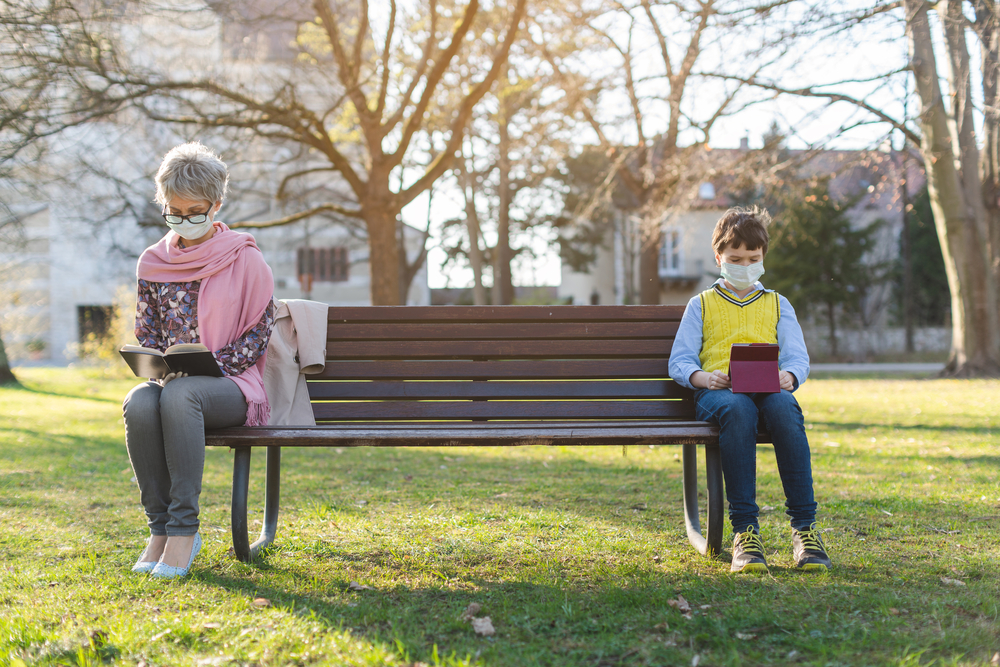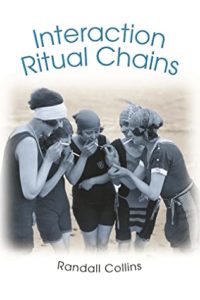Sociological Man
By Arnold Kling


- Individuals feel their way toward those situations in which, through the local combination of ingredients making an Interaction Ritual happen, the Emotional Energy payoff is the highest.
- —Randall Collins, Interaction Ritual Chains,1 p. 177
“Economic man” makes his calculations as a separate individual. Economists can and do analyze how a Robinson Crusoe translates his preferences into decisions. However, EE only arises in interactions among two or more people. Because EE is obtained and deployed in personal interactions, sociological man is socially constructed. Your personality emerges out of the sequence of significant social encounters that you experience as you go through life. These are what Collins calls interaction ritual chains.
EE plays a central role in Collins’ 2004 treatise, Interaction Ritual Chains, as well as in Napoleon Never Slept (henceforth NNS), a 2015 book co-authored with Maren McConnell that was written to appeal to a business audience. Interaction Ritual Chains is laden with academic jargon and references to prominent works of sociology. NNS is more accessible but too light to be convincing on its own.
In NNS, Collins describes Emotional Energy as follows.
- High EE is feeling pumped up, bodily and mentally. High EE persons are confident and proactive. They are forward moving; they have a path to a goal and they convey it to other people.
- Emotional energy can vary from high to low. Some social interactions pump up people’s EE. Other kinds of interactions bring them down. People with low EE are hesitant, passive, even depressed. They quickly lose enthusiasm and are easily tired.
- Great leaders make their social encounters generate high EE. And they avoid the kinds of encounters that bring EE down.
- … people in the group build up a shared emotion; the stronger the emotion, the more they feel themselves in tune with each other, and the more tightly they focus together. And the more tightly they focus, the more their shared emotion pumps each other up.
- … the leader of the group—the one at the center of attention—is getting the most energy of all… They are getting high on their work, getting high running a successful organization.
- —Napoleon Never Slept,2 p. 9
Imagine a quarterback leading his team on a drive toward a game-winning touchdown in a home game. The emotional energy of the quarterback feeds that of the rest of the players and the fans, and their energy in turn raises the emotional energy of the quarterback.
Or imagine a group very engaged in church worship, singing hymns and clapping in unison. They experience shared emotions and a feeling of solidarity, giving them high EE.
Your emotional energy is lowest when you feel excluded from a group. Imagine being among people all speaking a language that you do not understand.
A few years ago, I was seated at dinner with a number of people, several of whom I had never met. I was looking forward to interacting with them. However, a Rude Law Professor took over the conversation, telling story after story about people in his legal circles known to at most a couple of others at the table. Every time I tried to open up the conversation to hear from more dinner guests, the Rude Law Professor quickly re-asserted control and returned to telling his stories. If I were to describe this episode using Randall Collins’ terminology, I would say that the Rude Law Professor engaged in Emotional Dominance. The Rude Law Professor probably enjoyed the dinner and gained EE from it. I, on the other hand, felt marginalized. My emotional energy would suffer if this were to happen to me often.
Collins’ theory of Emotional Energy has many interesting applications. One aspect that particularly struck me was his emphasis on the important role that co-presence plays in generating experiences with high EE. For example, he asserts that if you are not physically present at a funeral or a wedding, you will not experience the same grief or joy felt by those in attendance. If you watch the football game by yourself on television, it will not be as powerful an experience as if you were in the stadium.
This emphasis on the importance of co-presence may explain what is missing in remote learning. A teacher in the classroom is better able to engage students using EE. In a live lecture, if everyone else is paying close attention to the speaker, you will sense this joint attention and this will lead you to focus on the lecture. On the other hand, if the audience seems distracted (people checking their phones), the lack of common focus will cause people to experience the event as having low EE.
Collins says that a large-scale, formal ritual can come across on television, but a small, informal gathering cannot. Since he wrote that book, the pandemic and Zoom have given us an opportunity to test that hypothesis. In a paper published in October of 2020, Collins points out a number of ways in which Zoom differs from face-to-face (F2F) meetings:
- Achieving synchrony with others is hard to do with a screen full of faces, delayed real-time feedback, and lack of full body language… In ordinary F2F conversation, persons do not stare continuously at others’ eyes, but look and look away… Thus, seeing a row of faces staring directly at you is artificial or even disconcerting.
- … Continuously seeing one’s own face on the screen is another source of strain.3
In the paper, Collins says that:
- Writing, inscriptions, paper, books, postal delivery, newspapers, all became capable of transmitting emblems of social membership and its markers in distinctive group meanings, but even here people had to learn to read them and give importance to them, and this was done in F2F settings. Can we say, though, that as media become more ubiquitous and mimic more aspects of F2F interaction, social connections become increasingly transferred to media connections while the bodily interactional basis fades away?
His answer is that so far it seems that people are suffering a loss of EE from social distancing. In the conclusion to his paper, Collins writes:
- If people are deprived of embodied interactions, we can expect they will be more depressed, less energetic, feel less solidarity with other people, become more anxious, distrustful, and sometimes hostile.
This seems to have occurred. Even prior to the pandemic, researchers were claiming to have found these sorts of effects of social media on people, especially teenagers.
Market activity and political activity take place within a social order. Our communications media appear to be disrupting this social order. Economists would do well to keep our eye on sociological man.
Footnotes
[1] Randall Collins, Interaction Ritual Chains, Princeton University Press, 2005.
[2] Randall Collins and Maren McConnell, Napoleon Never Slept: How Great Leaders Leverage Social Energy. Maren, Ink., 2016.
[3] Randall Collins, “Social distancing as a critical test of the micro-sociology of solidarity,” American Journal of Cultural Sociology, October 2020.
*Arnold Kling has a Ph.D. in economics from the Massachusetts Institute of Technology. He is the author of several books, including Crisis of Abundance: Rethinking How We Pay for Health Care; Invisible Wealth: The Hidden Story of How Markets Work; Unchecked and Unbalanced: How the Discrepancy Between Knowledge and Power Caused the Financial Crisis and Threatens Democracy; and Specialization and Trade: A Re-introduction to Economics. He contributed to EconLog from January 2003 through August 2012.
Read more of what Arnold Kling’s been reading. For more book reviews and articles by Arnold Kling, see the Archive.
